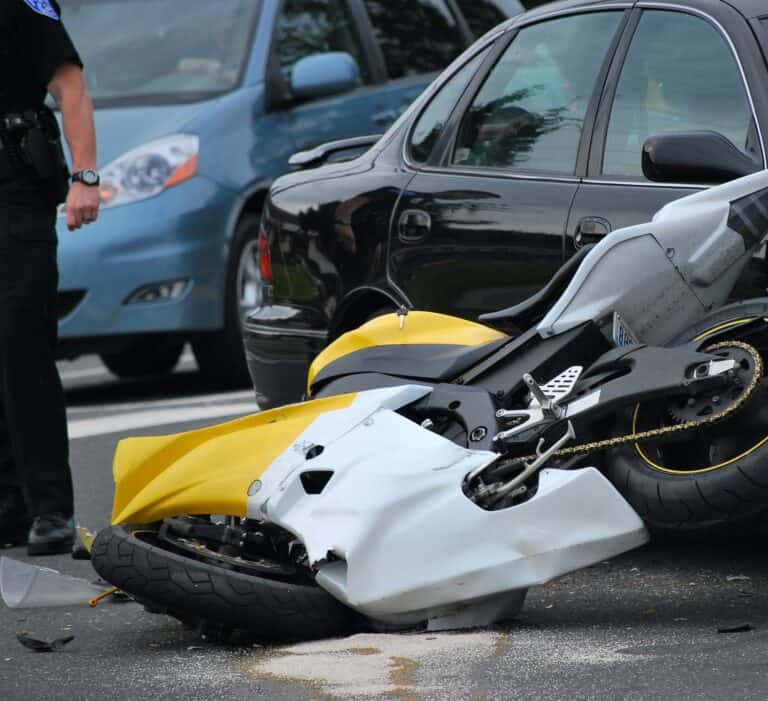Motorcycle accidents often result in serious consequences, leaving victims to deal with physical injuries, financial strain, and emotional turmoil. Central to resolving these issues is determining who is at fault in a motorcycle accident. This guide will take you through the process, providing a comprehensive, step-by-step analysis to establish liability accurately.
1. Understand the Legal Concept of Negligence
Negligence is the foundational principle of most personal injury laws. This is called a failure to exercise ordinary care. It means not behaving with the same level of caution as someone else would in the same situation. By understanding this, you can better identify and prove negligence in a motorcycle accident.
2. Gather Solid Evidence at the Scene
Collecting evidence at the scene is pivotal in determining fault. Detailed photographs, videos, and sketches of the accident site, vehicle damages, skid marks, and injuries are crucial. Also, note the weather and road conditions, traffic signals, and any potential witnesses. This step is crucial to creating a compelling case.
3. Obtain a Police Report
A police report can be an invaluable resource when determining fault. Law enforcement officers receive training to investigate accident scenes.
They are also responsible for writing detailed reports. These reports often include the officer’s opinion about who was at fault. Be sure to obtain a copy of this report as soon as it is available.
4. Seek Eyewitness Accounts
Eyewitnesses can provide an objective perspective of the accident, making their testimonies instrumental in establishing fault. Collect their contact information at the scene, if possible, for later statements that might aid your case.
5. Understand Your Local Traffic Laws
Local traffic laws play a significant role in determining fault. Familiarize yourself with them and identify any that the other party might have violated, thereby contributing to the accident.
6. Consult with Accident Reconstruction Experts
Accident reconstruction experts can help establish fault by analyzing the evidence and using scientific methods to recreate the accident scene. Their findings can be a powerful tool in proving negligence.
7. Engage a Professional Legal Counsel
Experienced legal professionals can provide invaluable advice and guidance when determining fault in a motorcycle accident. They can review evidence, suggest further investigations, negotiate with insurers and represent your interests in court if needed.
8. Document Your Injuries and Medical Treatment
Medical documentation is crucial evidence of the harm you suffered. Maintain a thorough record of your injuries, treatments, progress, and any prognosis or medical opinions about your future health.
9. Review and Analyze the Other Party’s Evidence
Part of establishing fault involves debunking the other party’s version of events. A thorough analysis of their evidence, combined with your counter-evidence, can strengthen your case and help establish their liability.
Determining fault in a motorcycle accident can be complex. This guide gives a thorough roadmap to address this issue. It can help you tackle this challenge effectively. Follow these steps to build a solid case, protect your rights, and ensure you receive the compensation you deserve.


